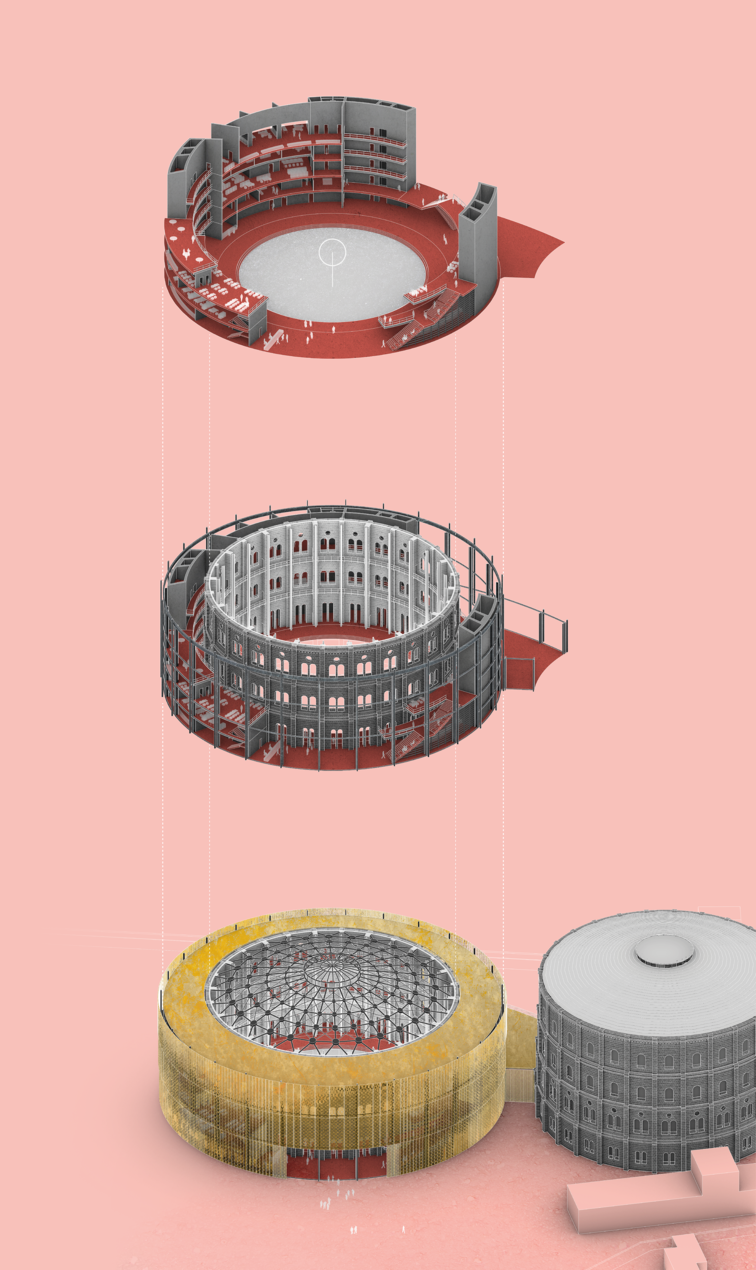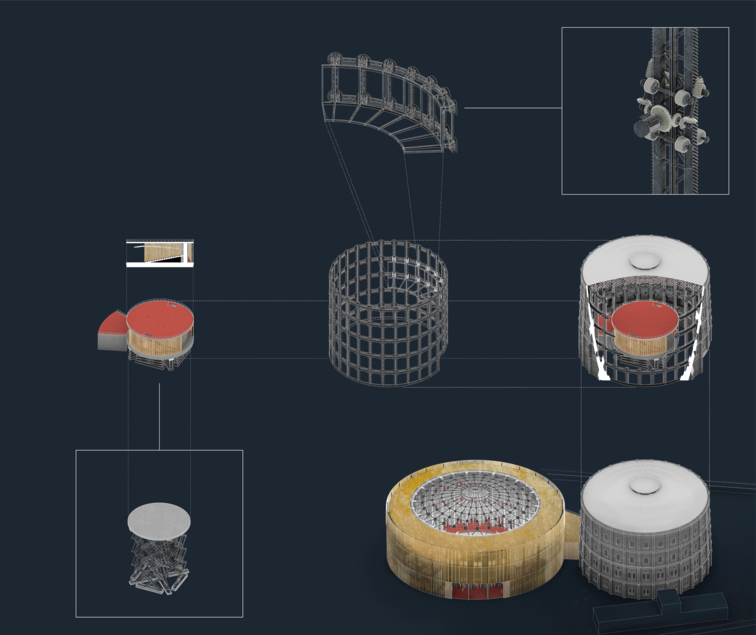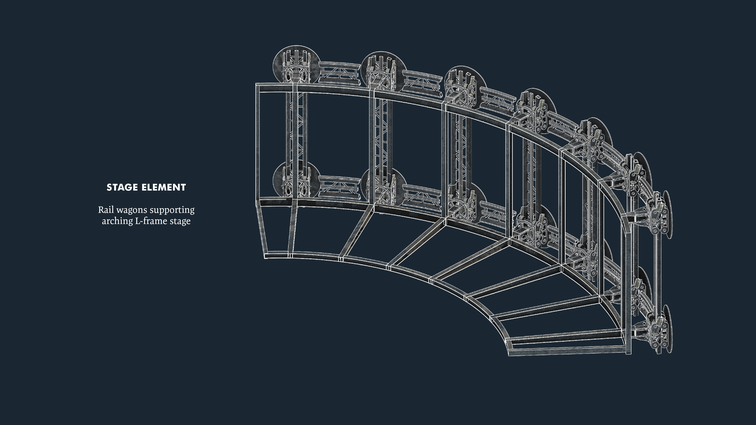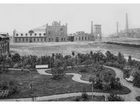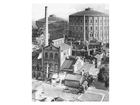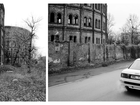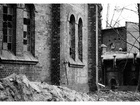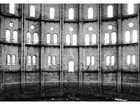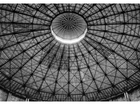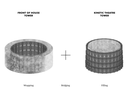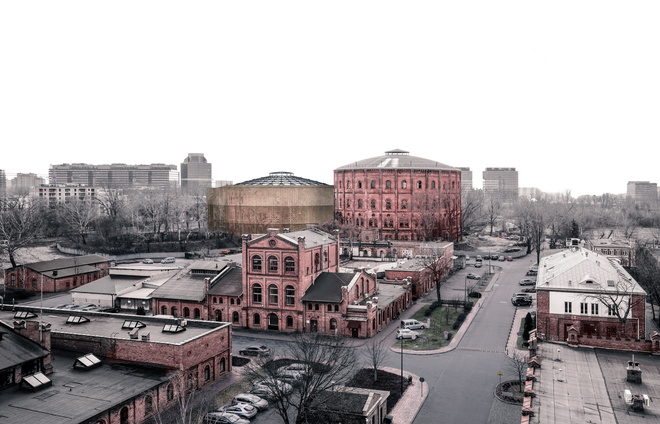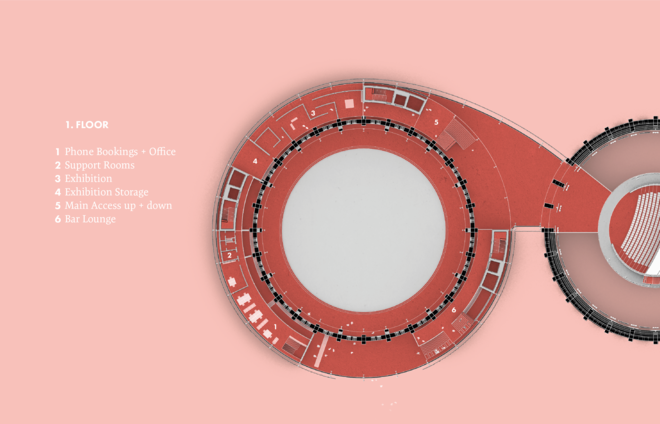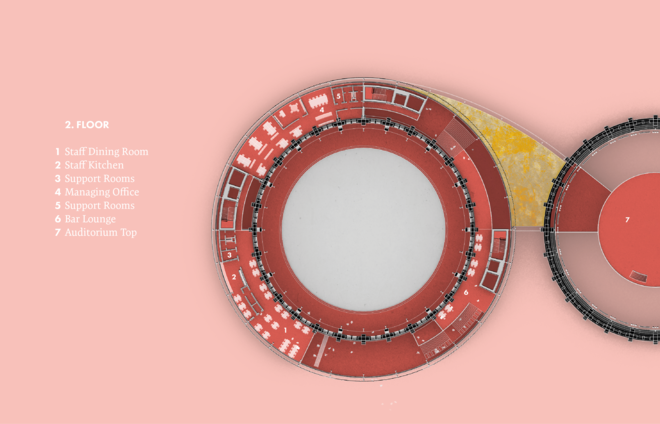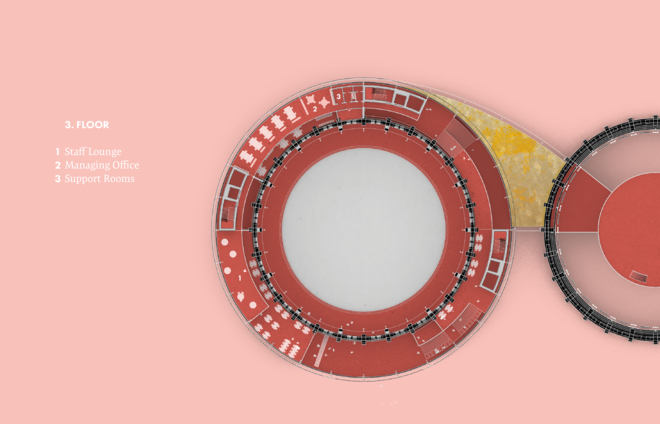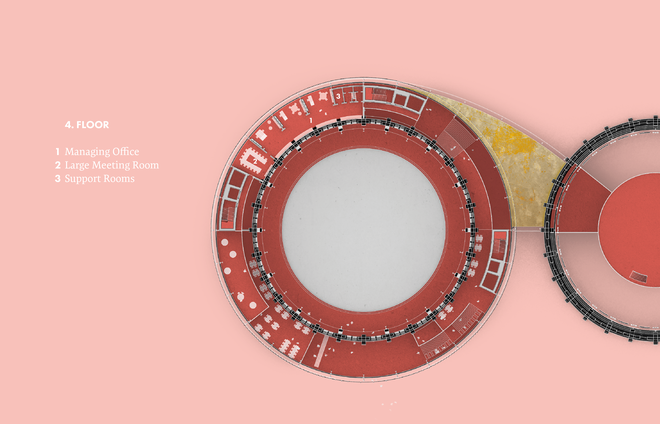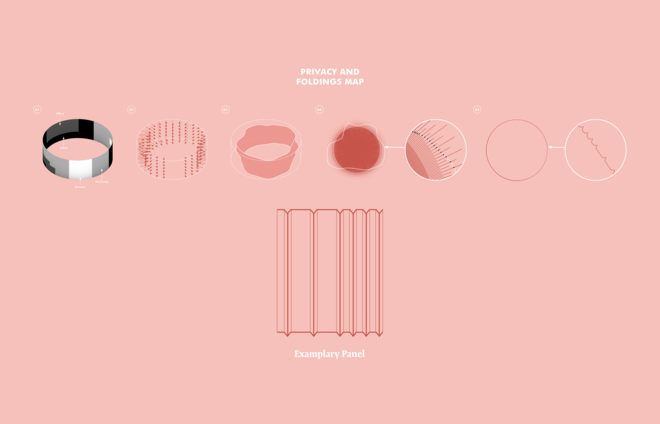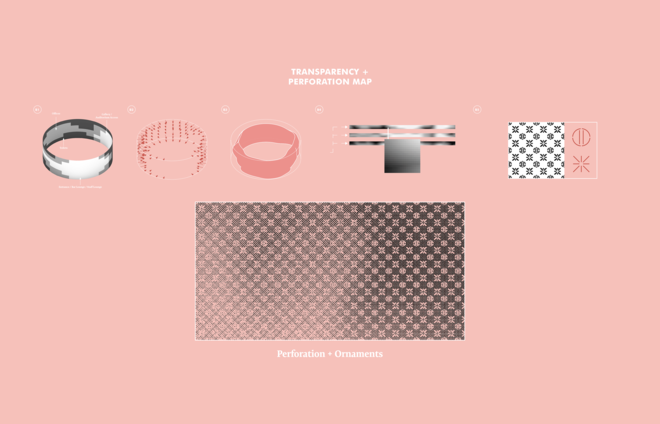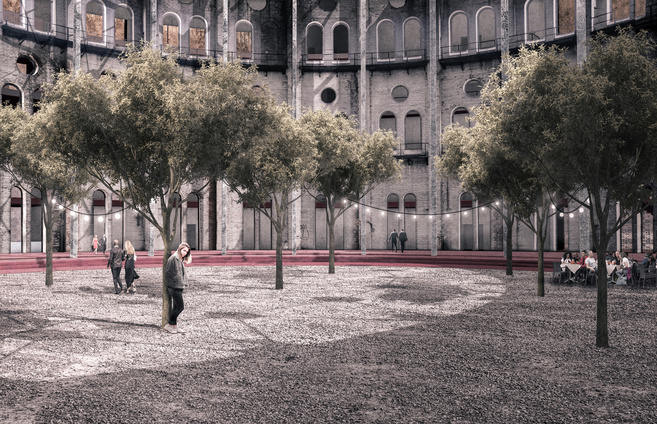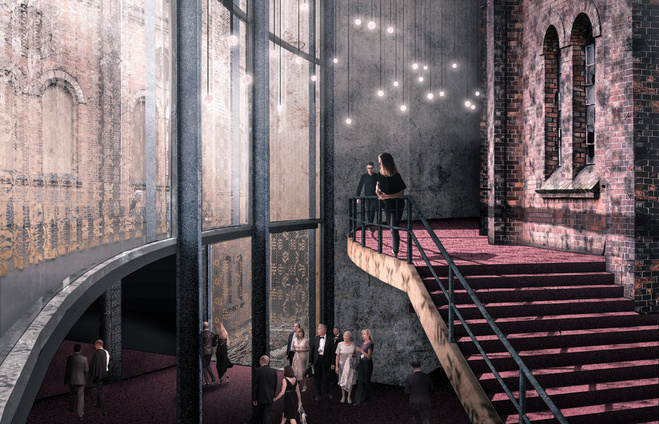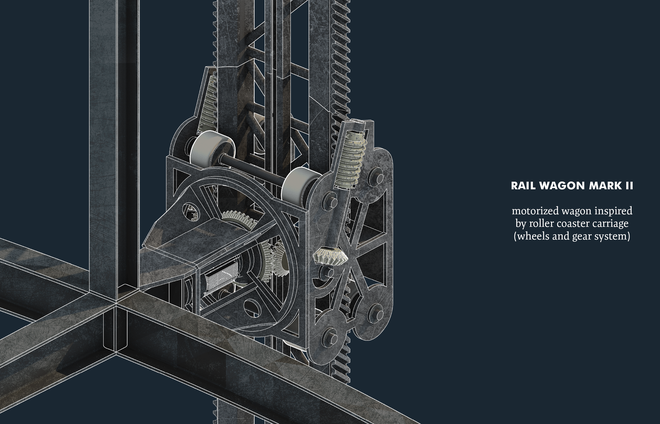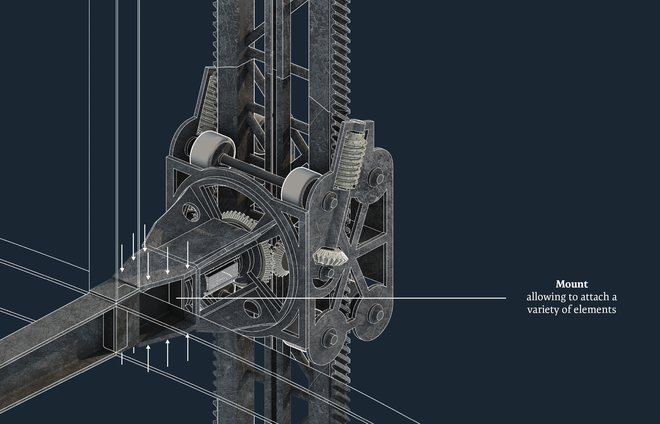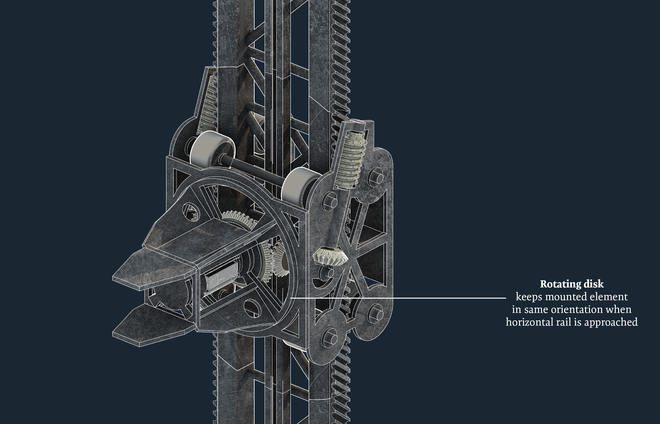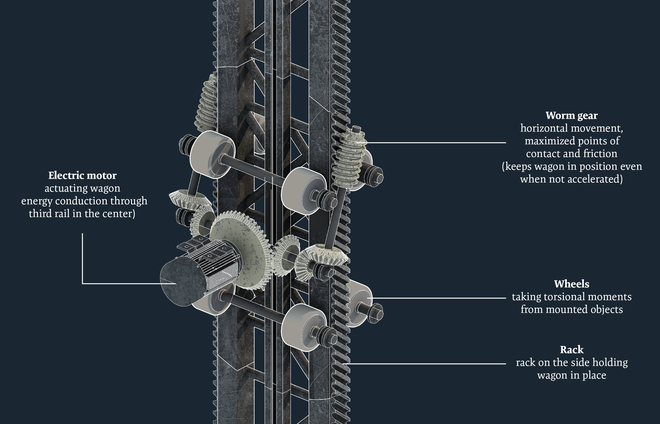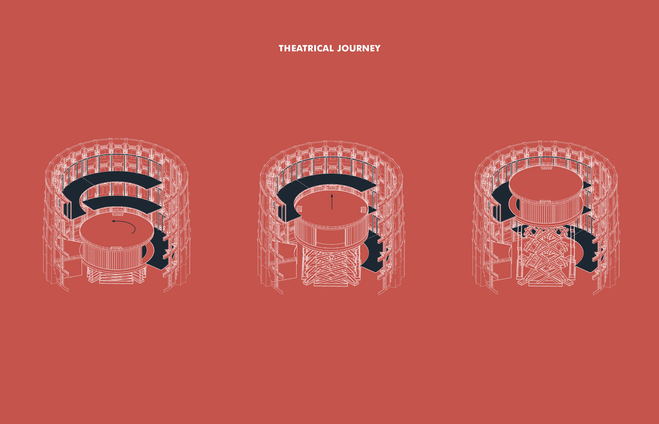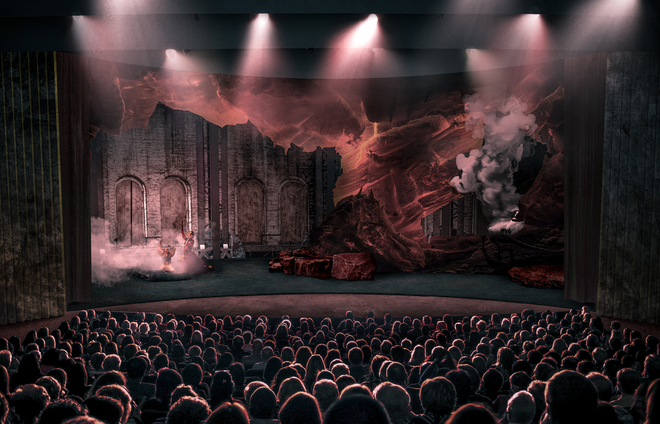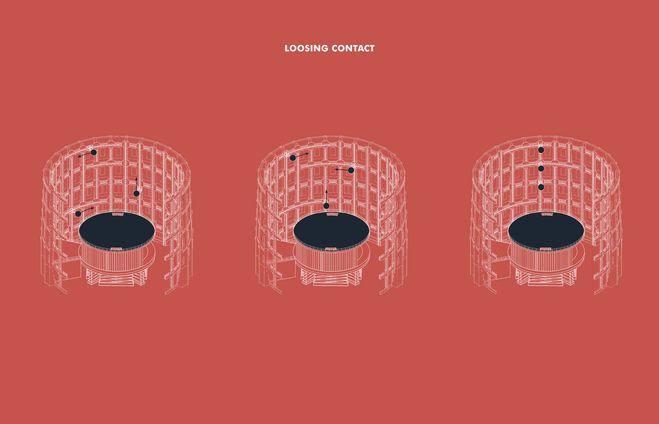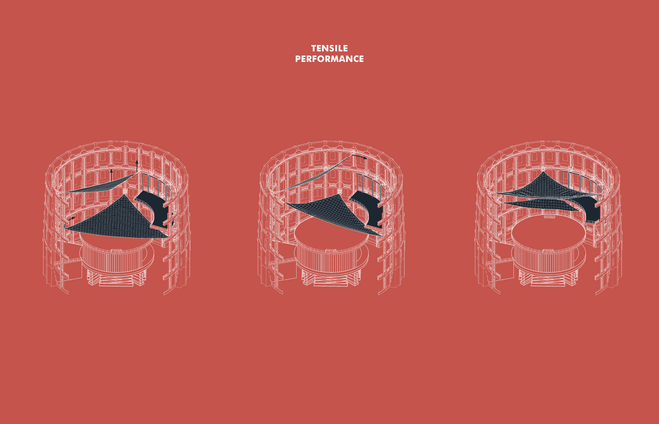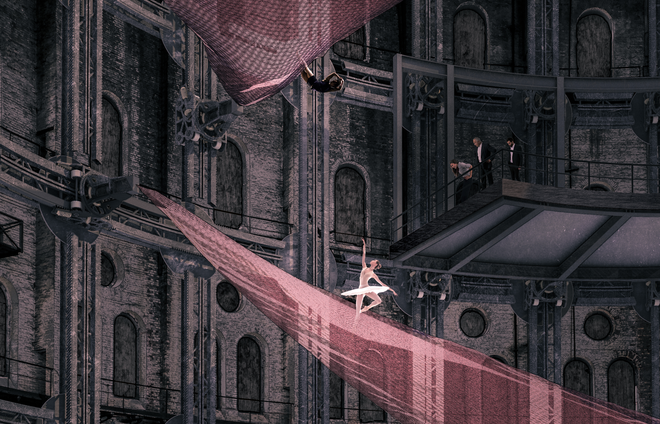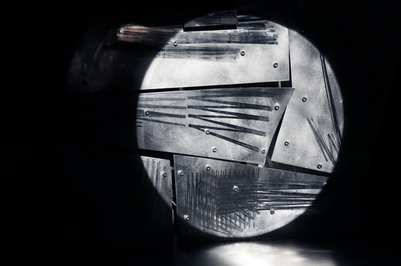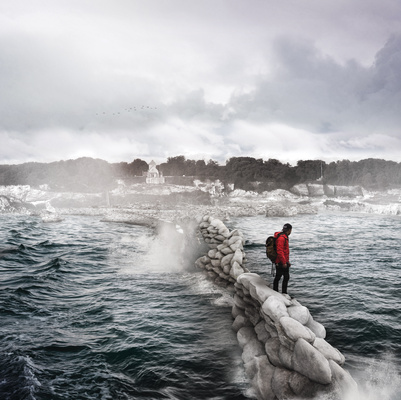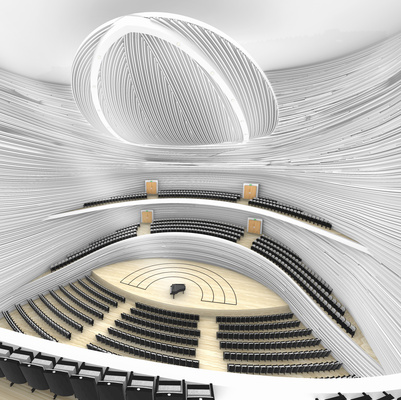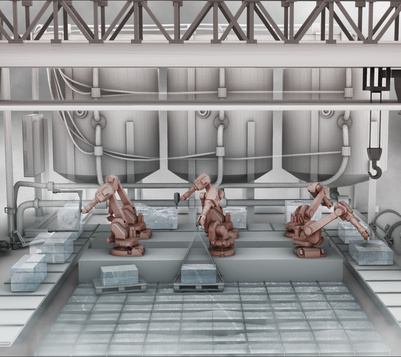Second Act
Introduction
“Something a person devotes his or her later life to, after retiring or quitting a former occupation.”
definition of ‘SECOND ACT’
Grounded on previous investigations of flexibility through kinetics, this thesis features the design of a speculative playhouse situated in two 19th century brick gas holders formerly utilized by Wola Gasworks in Warsaw.
The proposal is split into front of house with additional serving functions and the heart of the theatre - the stage and auditorium - to fit into and wrap around the two Varsovian towers.
More precisely, the interior of the first, smaller gas holder is being used as the public foyer with all theatre related public and non-public functions located in a the tower surrounding belt.
Being placed in the other, higher one of both gas holders, a large-scale kinetic apparatus enables the theatre to generate a myriad of different visitor experiences ranging from a more familiar stage/auditorium ensemble to far more experimental setups.
